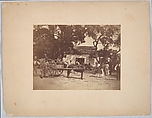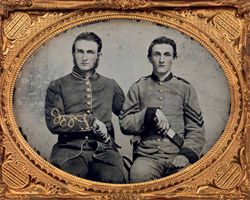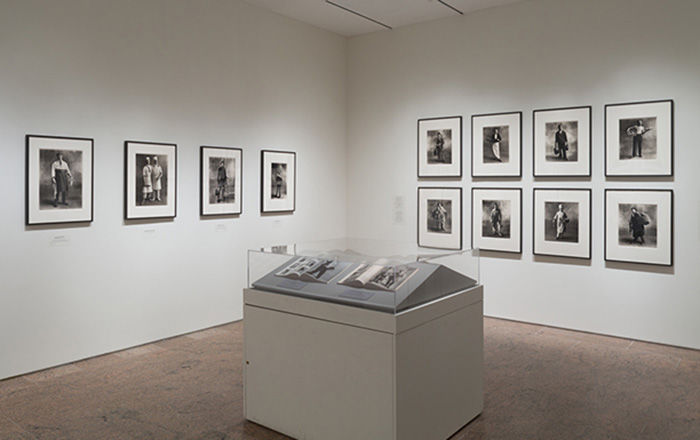Negroes (Gwine to de Field), Hopkinson's Plantation, Edisto Island, South Carolina
Henry P. Moore American
Not on view
In late fall 1861 or spring 1862, Henry P. Moore, a New Hampshire photographer, traveled from his home in Concord to make portraits of the Third New Hampshire Regiment in camp in Union-occupied coastal South Carolina. While in residence, he made some of the earliest and most poignant Civil War photographs of slave life in the Deep South. Moore focused on the changed lives of African Americans in the aftermath of the Union victory (navy and army) at the Battle of Port Royal, South Carolina, in November 1861. With the departure of their owners, plantation workers in Union-controlled areas were no longer slaves but, before the Emancipation Proclamation, not yet free. Moore made this well-published view of field workers on Edisto Island, where the Third New Hampshire had guard duty from April 5 to June 1, 1862. The former slaves now worked for their own benefit and were heading off in their mule-driven wagons to tend their sweet potatoes and other crops; within a year President Lincoln would give them their freedom.
This image cannot be enlarged, viewed at full screen, or downloaded.


